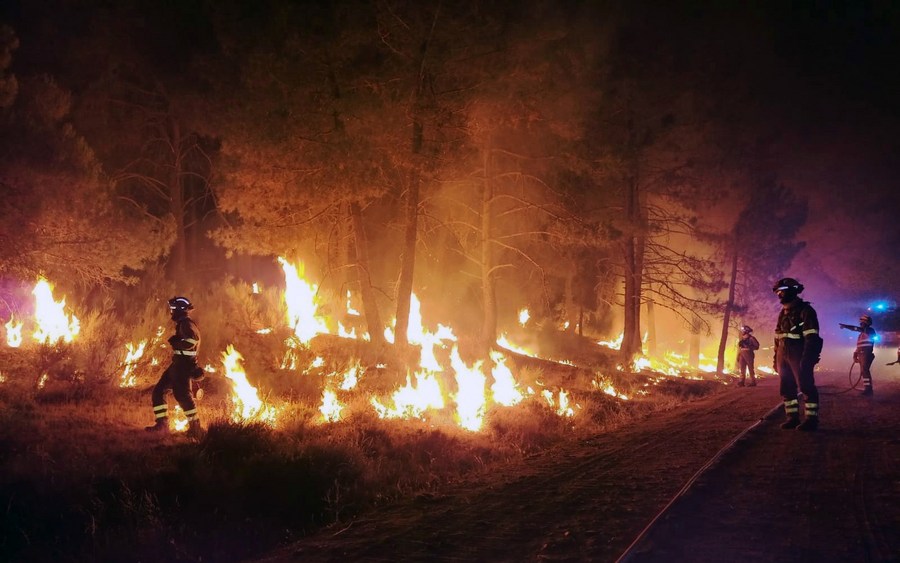
Firefighters Battle
On Monday, a wildfire broke out in the Leon province of northwestern Spain. By Tuesday 17 September, over 100 firefighters were working to battle the raging blaze. It threatened the villages of Tremor de Abajo and Almagarinos.
Satellite imagery from the European Space Agency’s Envisat satellite shows to assess the damage and burned area from a previous wildfire in the Guadalajara province of Spain. This shows that remote sensing data can be valuable for monitoring and assessing the impacts of wildfires.

Footage showed thick smoke billowing into the sky as the fire consumed the dry, wooded landscape. The Spanish Ministry of Defence reported that specialized forest firefighting units, known as BRIF to help contain the extreme event.
Severe Conditions Fuel Wildfire Threat
Wildfires are a major concern in Spain, in the hot or dry summer months. The country has faced numerous large-scale blazes in recent years. It led to a combination of high temperatures, drought conditions, and in some cases, human activity.

The wildfire in Leon province was no exception, ravaging the area of Losacio in the Castilla y León region. Satellite imagery from the Copernicus program captured the scale and intensity of the blaze, underscoring the severity of the situation.
Protecting Local Communities
Authorities worked quickly to respond to the wildfire and contain its spread towards residential areas. The presence of specialized firefighting units, like the BRIF teams, highlighted the seriousness of the threat and the need to protect local communities from the encroaching flames.
As the firefighters battled the blaze, the focus was on preventing the fire from reaching the nearby villages and safeguarding the natural reserves that might be at risk. As the situation unfolded, the local community remained on high alert, hoping the dedicated efforts of the emergency responders would be successful in controlling the devastating wildfire.














